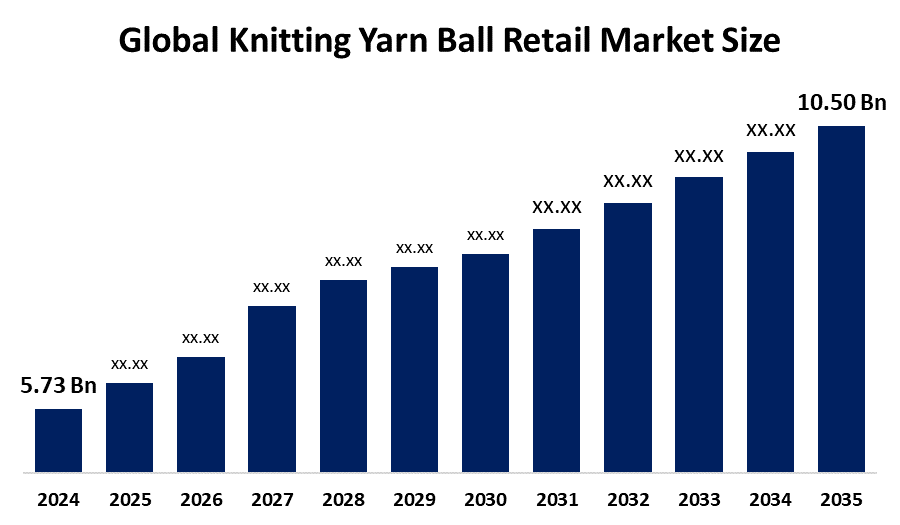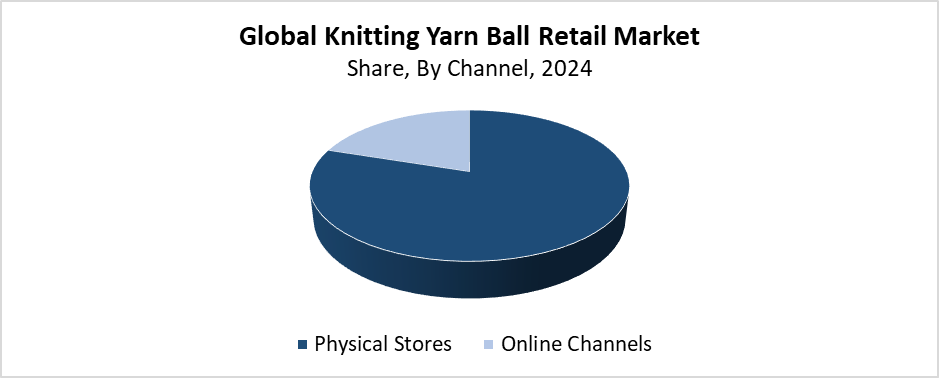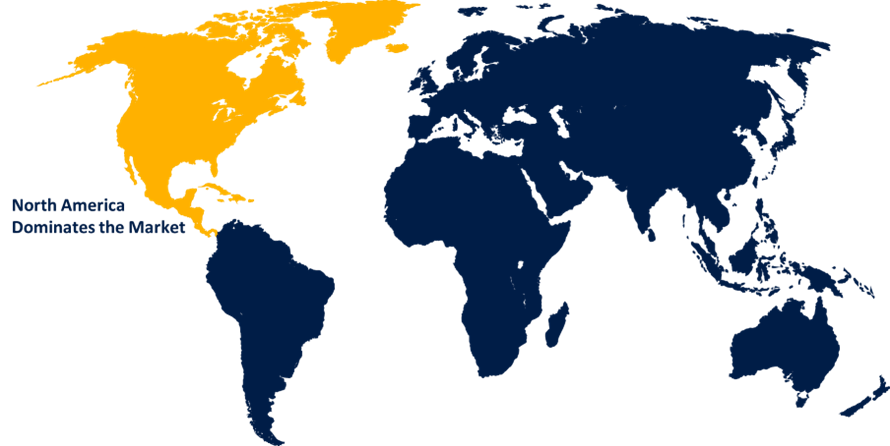Global Knitting Yarn Ball Retail Market Size, Share, and COVID-19 Impact Analysis, By Channel (Physical Stores, Online Channels), By Material (Cotton, Wool, Silk, Others), and By Region (North America, Europe, Asia-Pacific, Latin America, Middle East, and Africa), Analysis and Forecast 2025 - 2035
Industry: Chemicals & MaterialsKnitting Yarn Ball Retail Market Size Summary
The Global Knitting Yarn Ball Retail Market Size Was Estimated at USD 5.73 Billion in 2024 and is Projected to Reach USD 10.50 Billion by 2035, Growing at a CAGR of 5.66% from 2025 to 2035. The expansion of e-commerce platforms, the expanding demand for handcrafted and sustainable items, growing interest in do-it-yourself crafts, and the popularity of knitting as a creative, individualised, and relaxing pastime are all driving the knitting yarn ball retail market.

Get more details on this report -
Key Regional and Segment-Wise Insights
- In 2024, the European knitting yarn ball retail market held the largest revenue share of 37.6% and dominated the global market.
- In 2024, the physical store segment held the highest revenue share of 80.2% and dominated the global market by channel.
- With the biggest revenue share of 55.7% in 2024, the wool segment led the worldwide knitting yarn ball retail market by material.
Global Market Forecast and Revenue Outlook
- 2024 Market Size: USD 5.73 Billion
- 2035 Projected Market Size: USD 10.50 Billion
- CAGR (2025-2035): 5.66%
- Europe: Largest market in 2024
The Knitting Yarn Ball Retail Market operates as an industry which sells yarn balls used for knitting, crocheting, and other fiber art activities. The products serve extensive use by small textile businesses, craft hobbyists, and hobby enthusiasts. The market growth stems from three key elements, which include the rising popularity of DIY culture, the increasing need for custom-made products, and the expanding awareness about sustainable fashion practices. Social media platforms and online forums have played a major role in making knitting popular among young people today. People have started knitting because it helps them reduce stress and improve their focus. This leads to mental health benefits. People maintain their demand for knitting yarn balls because they use these products for gift-making and seasonal crafting activities, and because independent artisans continue to increase their numbers.
The market transforms because technological progress has made fiber blending and dyeing techniques, and eco-friendly materials such as organic cotton, bamboo, and recycled fibers widely available. E-commerce platforms and mobile apps now offer easier access to a wide range of yarns, patterns, and tutorials, expanding consumer reach. The sector receives support from government programs that promote local handicrafts and small businesses. These help developing nations grow their economies. The market foundation becomes stronger through backing women-led businesses and sustainable textile manufacturing.
Channel Insights

Get more details on this report -
The physical store segment held the largest revenue share of 80.2% and led the knitting yarn ball retail market in 2024. The dominant position exists because customers want to physically touch yarn products before buying them so they can assess texture, colour, and quality in person. People who want to buy yarn by feeling its texture and seeing its colour and quality have brought about this market dominance. The craft industry attracts both experienced knitters and beginners who seek guidance and creative ideas through their visits to craft stores, speciality yarn stores, and hobby centres. The customers value the support they get through in-person assistance, community workshops and educational programs. These help them develop their crafting skills. Local shops attract more customers because they offer handcrafted yarns and region-specific yarns. Physical retail channels thrive because they provide personalised service, immediate product access, and allow customers to physically touch yarn materials.
The online channel segment of the knitting yarn ball retail market is expected to grow at the fastest CAGR during the forecast period through a rapid CAGR expansion. The market growth results from increasing internet usage and the convenience of home delivery, together with the wide variety of yarns that e-commerce platforms provide. Online retailers attract younger, tech-savvy consumers because they offer detailed product information along with user reviews and digital video tutorials. The promotion of online buying continues because crafting communities and social media influencers distribute project concepts, product recommendations, and pattern designs. The worldwide availability of products enables customers to obtain speciality and unique yarns that do not exist in their local markets. The internet market will experience rapid growth because businesses continue to invest in mobile applications and user-friendly website development.
Material Insights
The wool segment held the largest revenue share of 55.7% and dominated the knitting yarn ball retail market in 2024. Knitters continue to select wool as their preferred material because it provides natural warmth, flexibility, durability, and versatility. The material serves as a favourite choice for creating warm, insulated items, including hats, scarves, and sweaters. Wool serves as an excellent choice for various knitting projects because it maintains its form without creating wrinkles. The segment remains strong because multiple wool types between merino and alpaca exist to meet both luxury and everyday needs. The natural wool industry sustains its market leadership because consumers choose it due to their rising interest in sustainable, biodegradable fibre products.
Over the forecasted period, the cotton segment of the knitting yarn ball retail market is expected to grow at a significant rate. The market expands because customers choose natural, breathable, hypoallergenic fibres, which they need for summer apparel, baby items, and home decor. Cotton yarn serves as the preferred choice for various knitting projects because it provides both comfort and durability and maintains its shape. The market trend toward sustainable and eco-friendly products drives manufacturers to produce more items using recycled and organic cotton yarns. People have started using cotton as a flexible, ethical alternative because they want to support sustainable and environmentally friendly crafting practices. This drives the market toward its strong anticipated expansion.
Regional Insights
The Asia Pacific Knitting Yarn Ball Retail Market experiences significant growth because traditional textile arts have made a comeback in the region, and people choose to create their own items, and their spending power has increased. Young consumers in China, India, Japan, and South Korea choose sustainable and handmade fashion, which drives up the demand for knitting supplies in their countries. The market growth receives additional backing through affordable raw material availability and strong domestic textile production facilities. E-commerce platforms have expanded their reach. This now allows yarn products to reach distant locations through online availability. The government supports local handicrafts, women-led businesses, and cottage industries through its policies, which help expand the industry. The business depends on crafting groups together with social media platforms to reach its growth targets.
North America Knitting Yarn Ball Retail Market Trends

Get more details on this report -
The knitting yarn ball retail market in North America experiences steady growth because of rising interest in crafting activities, do-it-yourself projects, and eco-friendly fashion. The demand for high-quality knitting yarns is rising as a result of consumers in the US and Canada demonstrating a strong preference for individualised, handcrafted goods. The market gains from an established crafting culture because people view knitting as both a creative outlet and a stress-relief activity. The most popular materials for clothing and accessories, and home decorations include wool, cotton, and mixed yarns. Social media influencers, together with e-commerce platforms, have created new market opportunities. These attract younger consumers. The local knitting community grows through speciality yarn shops, online resources, and craft exhibitions.
Europe Knitting Yarn Ball Retail Market Trends
The European knitting yarn ball retail market leads the worldwide market with the largest revenue share of 37.6% in 2024. The region maintains its position as a leader because of its strong demand for sustainable materials, its network of speciality yarn merchants, and its deep-rooted knitting traditions. The practice of knitting exists as a traditional craft and modern leisure activity throughout Germany, the UK, and France, and the Nordic countries. The demand for natural fibres, including cotton and wool, has grown because eco-friendly shopping and slow fashion trends continue to rise. The market growth continues because high-end yarn brands exist, crafting communities flourish, and people actively participate in workshops and fairs. Social media interactions and online sales activities make the regional market influence stronger.
Key Knitting Yarn Ball Retail Companies:
The following are the leading companies in the knitting yarn ball retail market. These companies collectively hold the largest market share and dictate industry trends.
- Ballyarn
- King Cole
- Gomitolatura Albatros di Chen Xiaoqun
- Sullivans USA
- Hobbii
- The Yarnery
- Vardhman Group
- Gedifra
- Ganga Acrowools
- Rowan
- Others
Market Segment
This study forecasts revenue at global, regional, and country levels from 2020 to 2035. Decision Advisors has segmented the knitting yarn ball retail market based on the below-mentioned segments:
Global Knitting Yarn Ball Retail Market, By Channel
- Physical Stores
- Online Channels
Global Knitting Yarn Ball Retail Market, By Material
- Cotton
- Wool
- Silk
- Others
Global Knitting Yarn Ball Retail Market, By Regional Analysis
- North America
- US
- Canada
- Mexico
- Europe
- Germany
- UK
- France
- Italy
- Spain
- Russia
- Rest of Europe
- Asia Pacific
- China
- Japan
- India
- South Korea
- Australia
- Rest of Asia Pacific
- South America
- Brazil
- Argentina
- Rest of South America
- Middle East & Africa
- UAE
- Saudi Arabia
- Qatar
- South Africa
- Rest of the Middle East & Africa
Need help to buy this report?